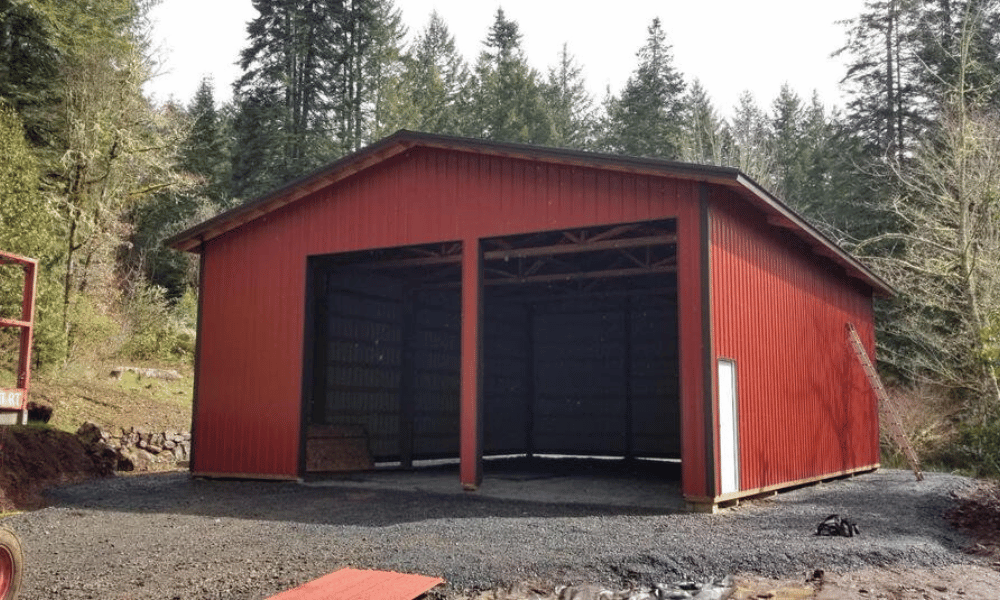Introduction
When it comes to maintaining a healthy environment for your equine friends, one often-overlooked aspect is ventilation. The importance of ventilation in https://generalcontractorusa.com/residential-construction/building-a-pole-barn-ultimate-guide-for-success/ your horse barn structure cannot be overstated. Poor air quality can lead to respiratory diseases, discomfort, and decreased productivity in horses. In this article, we will explore the nuances of barn ventilation, focusing on how proper airflow can enhance the well-being of your horses while ensuring that your building—be it pole barns or traditional structures—remains functional and safe.
Ventilation plays a crucial role in regulating temperature and humidity levels within a horse barn, thus minimizing the risk of mold growth and harmful airborne pathogens. Understanding how to effectively ventilate your barn can make all the difference between a thriving or declining equine environment.
The Importance of Ventilation in Your Horse Barn Structure
Why is Ventilation Critical for Horses?
Horses are highly sensitive creatures; their respiratory systems are particularly vulnerable to poor air quality. Stale air filled with dust, ammonia from manure, and other pollutants can lead to various health issues.

In essence, by ensuring adequate ventilation, you create an atmosphere where horses can thrive both physically and mentally.
Types of Ventilation Systems
Natural Ventilation
Natural ventilation relies on wind and thermal buoyancy to circulate air within the barn.
- Advantages: Cost-effective Low energy consumption Disadvantages: Less control over airflow Weather-dependent
Mechanical Ventilation
Mechanical systems use fans and ducts to regulate airflow.
- Advantages: Greater control over air exchange rates Consistent airflow regardless of external conditions Disadvantages: Higher installation and maintenance costs Energy consumption
Factors Influencing Barn Ventilation Requirements
Several factors must be considered when determining the best ventilation system for your horse barn:
Barn Size: Larger barns may require more complex systems. Horse Population: More horses mean higher ammonia levels and dust. Climate Conditions: Humid or hot climates may necessitate different approaches compared to cooler areas. Type of Structure (Pole Barns): The design can significantly affect natural airflow patterns.Understanding these factors will help you tailor a specific solution that meets your needs.
Designing Effective Ventilation Systems for Pole Barns
Pole Barn Design Considerations
When constructing pole barns specifically for horses, consider the following aspects related to ventilation:
Roof Height: Taller roofs allow hot air to rise while facilitating better circulation. Openings Placement: Windows or vents should be strategically placed for optimal cross-ventilation. Overhangs: Roof overhangs can protect openings from rain while allowing air to flow through freely.Suggested Ventilation Features for Pole Barns
Windows
- Install windows that can be opened easily to promote cross-ventilation.
Vents
- Ridge vents at the top of the roof can help expel hot air while drawing cooler outside air into the barn.
Fans
- Ceiling fans or exhaust fans at strategic locations can significantly improve airflow during hotter months.
Health Risks Associated with Poor Ventilation
Respiratory Diseases in Horses
Poorly ventilated barns increase the likelihood of respiratory ailments such as:
Heaves (Recurrent Airway Obstruction): A chronic lung condition exacerbated by dust and irritants. Pneumonia: Often triggered by viral infections that flourish in stale environments. Allergies & Inflammation: Increased exposure to allergens leads to inflammation in sensitive horses.Signs Your Horses Might Be Suffering From Poor Air Quality
Be vigilant for these signs indicating that your horses may not be getting enough fresh air:
- Frequent coughing or nasal discharge Excessive sweating even during mild exercise Lethargy or reduced appetite
By monitoring these symptoms closely, you can take action before serious health issues arise.
Best Practices for Maintaining Optimal Airflow
Regular Inspection
Conduct regular inspections of all components of your ventilation system:
Check windows and vents for blockages from dirt or debris. Ensure mechanical systems like fans are functioning properly.Seasonal Adjustments
As seasons change, so too should your approach to ventilation:
Open more windows during warm months but close them during winter. Use heating devices judiciously—too much heat can lead to excess dryness.FAQs About Horse Barn Ventilation
What is the ideal airflow rate for horse barns?
The recommended airflow rate is about 60 cubic feet per minute (CFM) per horse under normal conditions.
How do I know if my barn has sufficient ventilation?
Monitor your horse's behavior; signs like coughing or lethargy could indicate poor air quality.
Can natural ventilation be effective in colder climates?
Yes! With strategic design choices such as high ceilings and appropriate vent placement, natural ventilation can still work effectively even in cold climates.
What materials are best for creating vent openings?
Materials like vinyl or aluminum are durable options often used for window frames due to their resistance against environmental elements.
Do I need a professional service for setting up mechanical ventilation?
It is highly recommended as professionals ensure precise calculations regarding airflow requirements tailored specifically for your structure's design and size.
How frequently should I clean my barn’s ventilations?
Regular cleaning every season helps maintain optimal efficiency; however, additional checks might be necessary after heavy storms or windy days when debris could accumulate in vents.
Conclusion
In conclusion, understanding the importance of ventilation in your horse barn structure is paramount not only for maintaining a healthy living space but also enhancing overall productivity among horses housed within it. Whether you're utilizing traditional designs or opting for modern pole barns, effective ventilation systems are essential investments toward safeguarding equine health and optimizing performance capabilities long-term.
With careful planning—including considerations around natural versus mechanical systems—you stand poised not just to meet regulatory standards but also exceed expectations by creating a sanctuary where both horses—and their owners—can truly thrive together harmoniously!